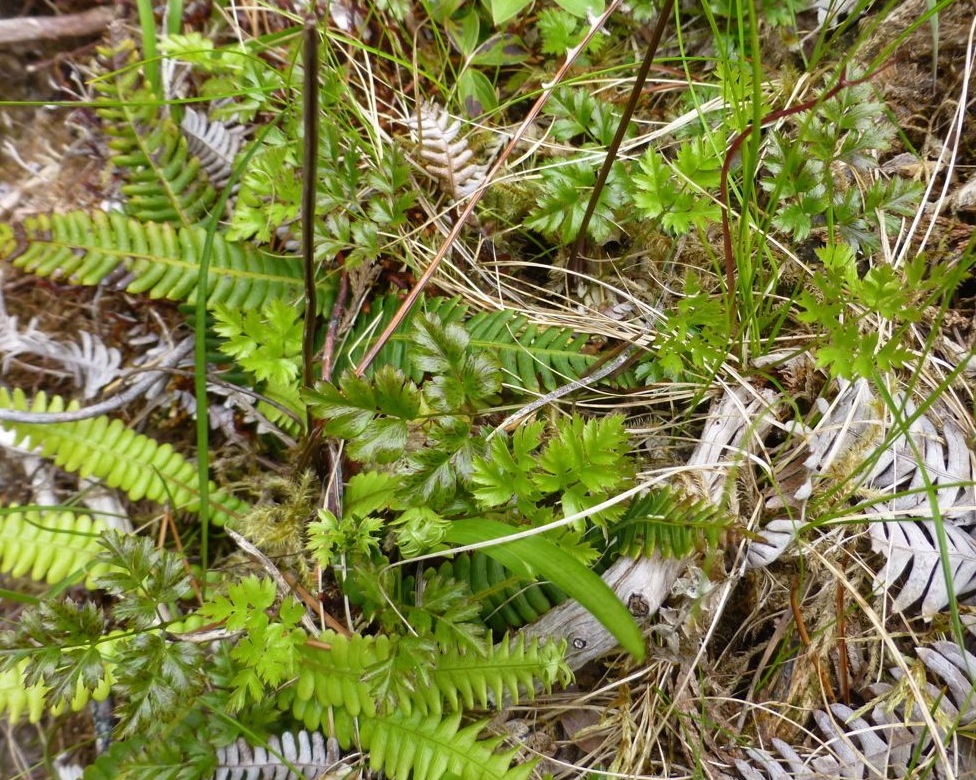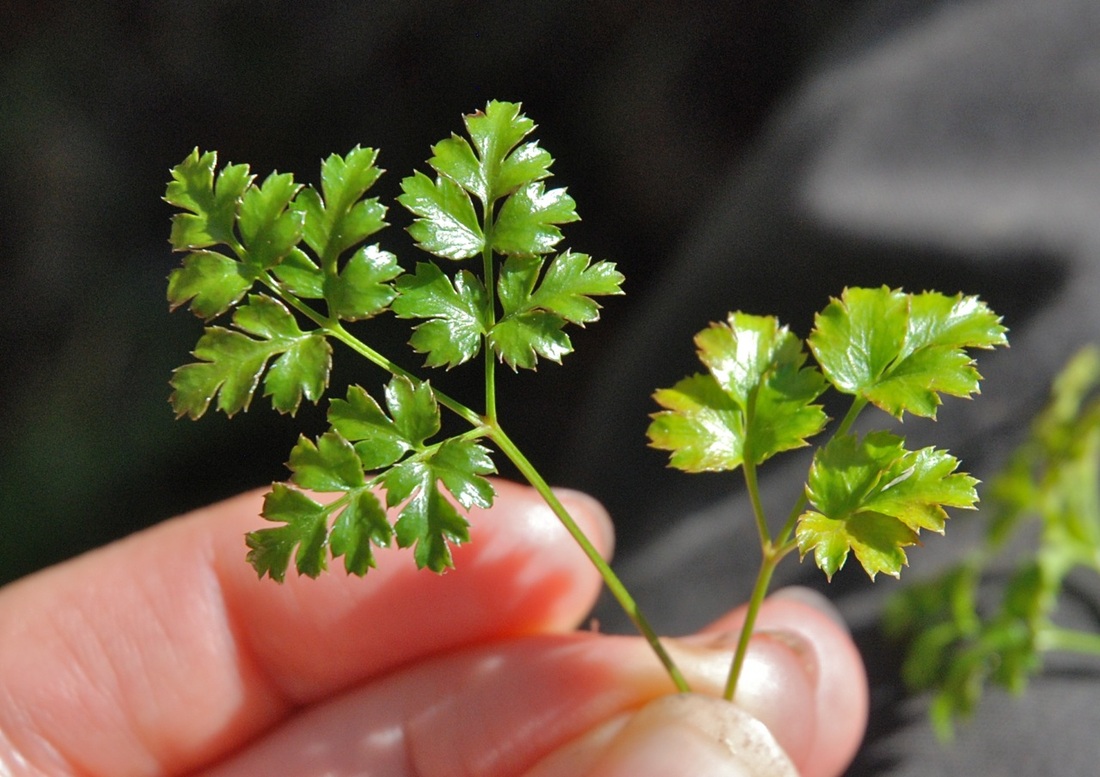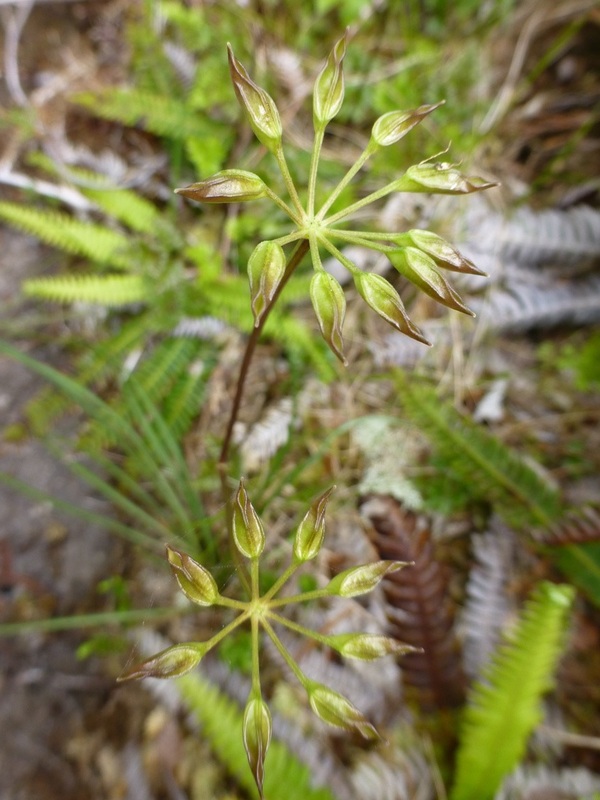Fern-leaved goldthread, spleenwort-leaved goldthread • Coptis asplenifolia
{Goldthread = a reference to the golden colour of the thread-like rhizomes; Coptis from kopto = to cut, referring to the divided leaves; asplenifolia = fern-like leaves}
Identification
This evergreen perennial species belongs to the buttercup family and grows 10-30 cm tall from golden yellow rhizomes. Its shiny, fern-like leaves are 2 or 3 times pinnately compound leading to five or more shore- or long-stalked leaflets. The leaflets are egg-shaped, deeply lobed, and toothed. The nodding, delicate-looking flowers are a pale greenish-white colour and occur in two's or threes' on a stalk. The seeds occur in spreading beaked pod structures (follicles).
Habitat & Range
Fern-leaved goldthread grows in bogs and moist to wet forests from low to middle elevations. It is a common species in coastal British Columbia west of the Coast-Cascade Mountains, and extends northward to southern Alaska, and south to northern Washington.
Similar Species
Three-leaved goldthread (Coptis trifolia), a less common species, has leaves divided into three shallowly lobed, sharply-toothed leaflets. Its whitish fleshy flowers occur singly and look distinctly different from those of fern-leaved goldthread.
iNaturalist
https://www.inaturalist.org/taxa/160861-Coptis-aspleniifolia
This evergreen perennial species belongs to the buttercup family and grows 10-30 cm tall from golden yellow rhizomes. Its shiny, fern-like leaves are 2 or 3 times pinnately compound leading to five or more shore- or long-stalked leaflets. The leaflets are egg-shaped, deeply lobed, and toothed. The nodding, delicate-looking flowers are a pale greenish-white colour and occur in two's or threes' on a stalk. The seeds occur in spreading beaked pod structures (follicles).
Habitat & Range
Fern-leaved goldthread grows in bogs and moist to wet forests from low to middle elevations. It is a common species in coastal British Columbia west of the Coast-Cascade Mountains, and extends northward to southern Alaska, and south to northern Washington.
Similar Species
Three-leaved goldthread (Coptis trifolia), a less common species, has leaves divided into three shallowly lobed, sharply-toothed leaflets. Its whitish fleshy flowers occur singly and look distinctly different from those of fern-leaved goldthread.
iNaturalist
https://www.inaturalist.org/taxa/160861-Coptis-aspleniifolia
References
Coptis aspleniifolia Salisb. In Klinkenberg, Brian. (Ed.). E-Flora BC: Electronic Atlas of the Plants of British Columbia. Lab for Advanced Spatial Analysis, Department of Geography, University of British Columbia, Vancouver. Accessed 04/11/2014.
Pojar, J. and MacKinnon, A. (1994). Plants of Coastal British Columbia. Vancouver, BC: Lone Pine Publishing. P. 178.
Authors and editors of page
Kelly Fretwell and Brian Starzomski (2014).
Coptis aspleniifolia Salisb. In Klinkenberg, Brian. (Ed.). E-Flora BC: Electronic Atlas of the Plants of British Columbia. Lab for Advanced Spatial Analysis, Department of Geography, University of British Columbia, Vancouver. Accessed 04/11/2014.
Pojar, J. and MacKinnon, A. (1994). Plants of Coastal British Columbia. Vancouver, BC: Lone Pine Publishing. P. 178.
Authors and editors of page
Kelly Fretwell and Brian Starzomski (2014).







